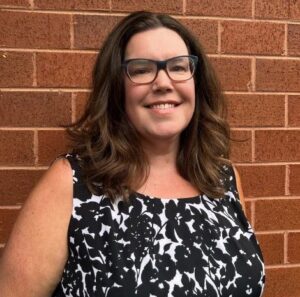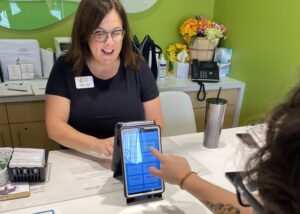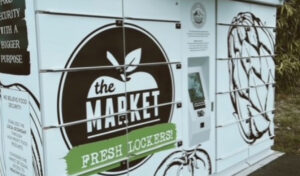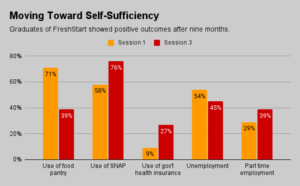Food banks are not the only types of hunger relief agencies to pair free food alongside other social services (see article here).
Some food pantries are also adding non-food social services like employment help, medical support and financial literacy to their food offerings. They are housing the combined services in newly constructed modern spaces, making it easy for people lacking resources to find all the help they need in one welcoming place.

It’s a “no-wrong-door approach,” said Jennifer Montgomery, President and CEO of Leesburg, Va.-based Loudon Hunger Relief, which held a ribbon-cutting in late September to celebrate the opening of its new Community Services Center.
The new center houses a full-choice, free-food market, which Montgomery expects will be a gateway for people to access other services at the center, including help with reading and literacy, job placement, and help for adults with disabilities. In addition, clients can access a pet-food pantry, use a community computer, and get help with applying for services like SNAP and Medicare.
“Maybe you came for a literacy class. And now you realize that maybe it would be helpful if you could go home with food today too,” Montgomery said.
Co-locating community services is an attempt to upend the current social services delivery model, which usually requires low income people with multiple needs to travel from place to place, undergoing lengthy intake processes at each spot. Co-location is a way to offer more efficient and dignified access to social services.
“Sometimes, you can spend so much time making phone calls. You can make a ton of phone calls to try and figure out how to get rent assistance. Well, that could take hours,” Montgomery said. “Trying to help people get to the right place at the right time while they’re already in one place is our goal.”
Overcoming a fragmented and disjointed social services system is also the goal of Footprints Food Pantry of Kittery, Me., which has teamed up with a local provider of housing support to develop a one-stop shop of resources to help guide people out of poverty. The combined entity, to be known as Mainspring, will also incorporate medical services, legal aid, tax prep, and veteran’s and other services.
The group is expected to break ground soon on the project, which was jump started by $750,000 in funding from the American Rescue Plan Act. So far, it has raised almost $4 million of a $5.4 million campaign. The vision is to transform a “set of isolated services into an easy-to-access network of coordinated resources,” said Mainspring in its case statement.

In Virginia, the idea and need for an all-in-one community services center had been floating around Loudoun County for years, Montgomery said. The opportunity to put that idea into practice at scale came about because the pantry’s use of a county-owned building was set to expire. After failing to find an alternative site, Loudoun Hunger Relief proposed an expansion of its existing space, with the organization handling all of its own fundraising and construction. The county approved the plan in 2018.
Loudoun Hunger Relief and its partners use the building for free under a rent abatement. The pantry, however, is responsible for maintenance and other costs. Co-located partners pay a shared-services fee to Loudoun Hunger Relief, which covers everything from insurance to water and electricity. “As sort of the landlord of the center, we’re just passing along a straight pass-through cost per square foot,” Montgomery said. “We’re not making any money off of this.”
For food pantries that want to replicate this type of model, Montgomery said it’s crucial to listen to the needs of your community and to leverage your existing relationships and networks. “Don’t just work in a vacuum,” she said. “Find those partnerships, figure out what makes sense. What does the population that you’re serving need? Ask them.”
When Loudoun Hunger Relief surveyed its community, it found that having a choice of free food was actually a close second to clients’ number-one priority: “To feel welcomed, and that people were friendly, and that they didn’t feel bad about coming here,” Montgomery said.
She added, “I just want people to feel like this is a place where you can walk in the door, and someone’s gonna smile and be kind and help figure out how to best connect you to resources to get your needs met.” – Mike Peterson
Mike Peterson is a San Diego-based writer, editor, and strategist who is passionate about finding and telling stories that matter.
PHOTO, TOP: Loudon Hunger Relief’s new free-food market is the centerpiece of a new facility that includes access to a full suite of community services.
Like what you’re reading?
Support Food Bank News
This article was made possible by the readers who support Food Bank News, a national, editorially independent, nonprofit media organization. Food Bank News is not funded by any government agencies, nor is it part of a larger association or corporation. Your support helps ensure our continued solutions-oriented coverage of best practices in hunger relief. Thank you!
Connect with Us:










